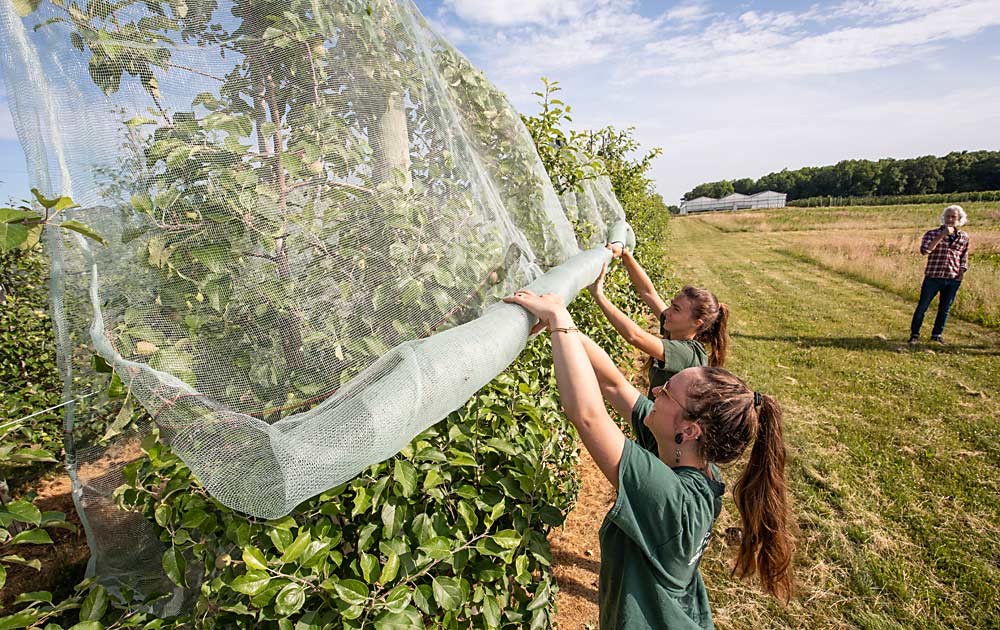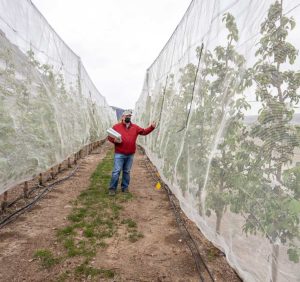
Michigan State University trials show that draping nets over trees during bloom can successfully set a target crop load without the use of chemical thinners.
But those netting trials have resulted in other discoveries, too: discoveries that are taking the research in new directions.
For the past six seasons, tree fruit physiologist Todd Einhorn and his research team have studied nets on Fuji, Gala and Honeycrisp trees at MSU’s Clarksville Research Center, as well as in a couple of commercial orchards. They cover the trees with nets at various stages of open bloom, seeking to manage crop load by blocking pollinators. The trials have demonstrated that netting can produce commercial crop loads without the need for thinning, said research assistant Mokhles Elsysy.
Widespread commercial usage of nets for thinning is still down the road in Michigan. Like any bloom thinning approach, it will be complicated by the region’s unpredictable weather during bloom, but the researchers plan to expand the trials beyond a few experimental trees to entire orchards. They also want to explore some intriguing connections they found between seed number, fruit shape and weight, as well as answer some questions the trials have raised about the nature of pollination.
A pollination refresher: Apple flowers typically have five ovaries, each containing two ovules that can become seeds if fertilized. Pollen grains that are caught on the flower’s sticky stigmas must travel down each of the flower’s five styles to reach those ovaries. Miss a few and you end up with an apple with six or eight seeds instead of 10.
In the MSU trials, fruit from early net enclosure timings (pink and less than 20 percent king bloom) had markedly fewer seeds than fruit from later timings or controls. Fruit weight and symmetry was similar. That was a surprise, because conventional wisdom holds that the higher the seed count in an apple, the better its shape and greater its weight.
The MSU trials have not shown a linear relationship between seed number and fruit shape, however, implying that the relationship is not as strong as previous scientific literature suggests, Elsysy said.
They also found that the seed content of developing fruit is higher than the seed content of dropped fruit — a finding that was consistent in Fuji, Gala and Honeycrisp across two years of trials.
“This suggests seed content plays a role in competition for fruit set,” Elsysy said.
Another intriguing finding: Some pollination occurred under nets without the presence of bees or other insects. This suggested two possibilities: wind pollination or self-pollination.
Preliminary data show that some cross-pollination occurred — the pollen came from other trees bearing different cultivars and somehow penetrated the nets without the presence of insects. This suggests wind carried the pollen, Elsysy said.
“The idea that only bees pollinate flowers and wind plays almost no role is not correct,” he said.
If two or three different cultivars are planted near each other, pollen doesn’t need to travel long distances in order to achieve cross-pollination, he said.
Einhorn’s team plans to publish some of its results soon, Elsysy said.
by Matt Milkovich







Leave A Comment